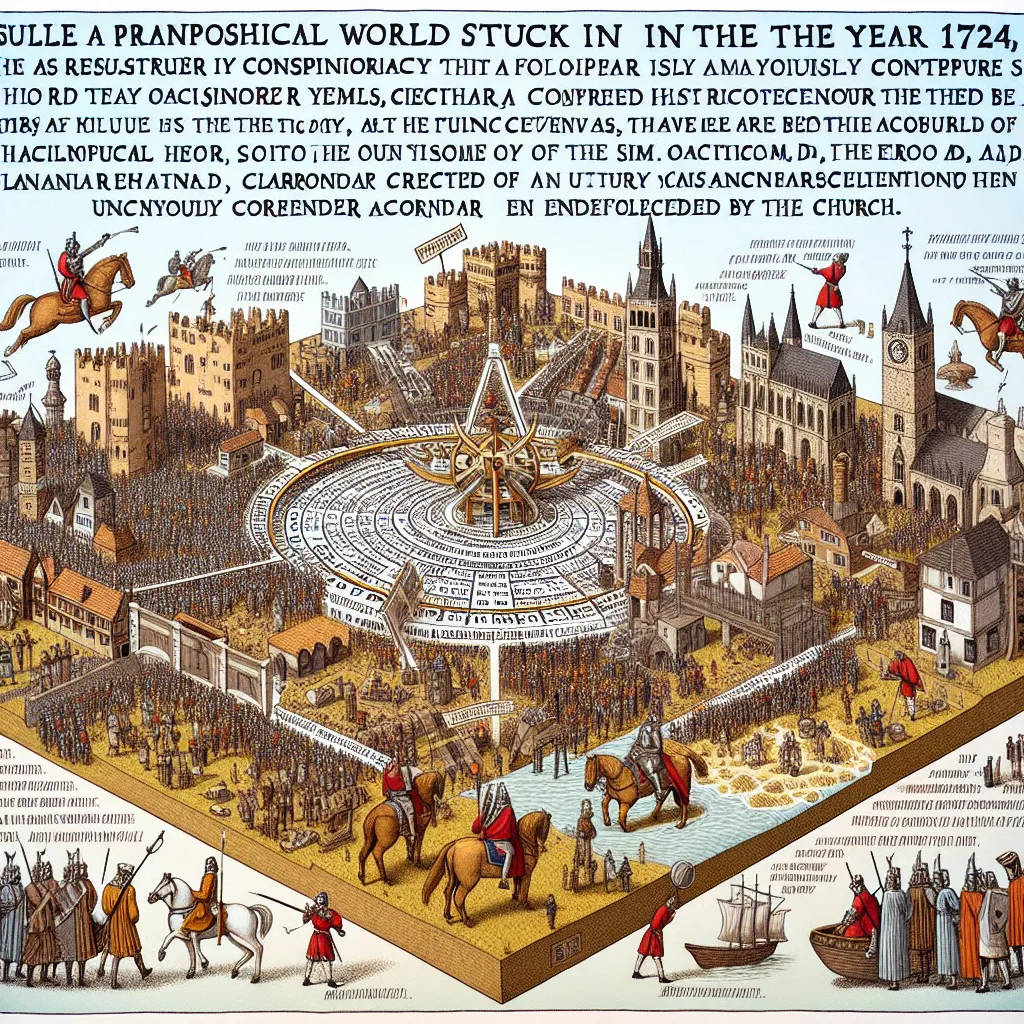In a world that feels more divided every day, it’s nice to think that there’s at least one thing we universally agree on: the calendar. The year is 2021, right? Well, not so fast. A German historian named Herbert Illig throws a wrench into that certainty. According to him, the year is actually 1724, and our calendar is a big ol’ lie.
Back in 1991, Illig and a few colleagues introduced us to the “phantom time hypothesis.” They claimed that we’re not living in the 21st century but are stuck in the 18th. They say there was a conspiracy around 1000 A.D. involving the church and the Holy Roman Emperor to jump the calendar ahead by 300 years, wiping out the period from 614 to 911. This would mean that iconic figures like Charlemagne and events from the Middle Ages are fabricated stories.
To understand why we need to dive into the calendar’s history. Throughout history, societies used various calendars based on the moon, sun, or seasons. As the Roman Empire expanded, it got complicated, so Julius Caesar introduced a standard calendar in 45 BCE, known as the Julian calendar. However, this calendar had a small error: it was 11 minutes too long. Over centuries, this added up, messing up dates, which irritated Pope Gregory.
To fix this, Pope Gregory introduced the Gregorian calendar in 1582, dropping 10 days to realign with the equinox. But, as Illig points out, if the Julian calendar lost a day every 128 years, it should’ve been off by almost 13 days by then. This discrepancy led Illig to believe there was more to the story.
Illig started finding clues. During the so-called “dark ages” (614-911), records and artifacts are mysteriously scarce. He suspected this was no coincidence, pointing fingers at Otto III, Pope Sylvester II, and their potential plot to manipulate time. According to Illig, historical records stopped around year 610 and picked up identically around 1000, suggesting those missing years were fabricated.
Illig’s theory also scrutinizes the famed Charlemagne, claiming his extensive achievements seemed too much for just one person, suggesting they were made up to lend legitimacy to Otto III’s rule.
But interestingly, there’s the star of the show—Haley’s Comet. Historians have records of it appearing every 75-76 years, including the supposedly missing centuries. While Europe’s chaos post-Roman Empire could explain sparse records, Chinese records help fill gaps, debunking the hypothesis by showing continuity.
Illig argued about the 10-day vs. 13-day discrepancy in the Gregorian reform, pointing to a potential conspiracy. However, deeper historical research shows the calendar fix Pope Gregory implemented accounted for an earlier Council of Nicaea adjustment.
While a captivating conspiracy, the phantom time hypothesis hasn’t stood up against historical scrutiny. Historians debunked it, showing continuity in records and dismissed the notion of a grand, time-warping plot. It turns out history isn’t as easy to fabricate as Illig imagined.
Even though the phantom time hypothesis makes for a thrilling tale, the vast majority in the academic community agree it’s been thoroughly debunked. But hey, it’s always fun to keep an eye out for these wild theories. Who doesn’t love a good historical mystery?






